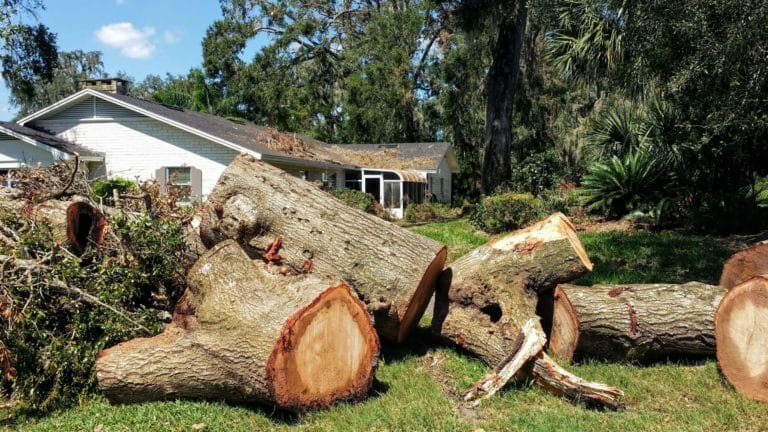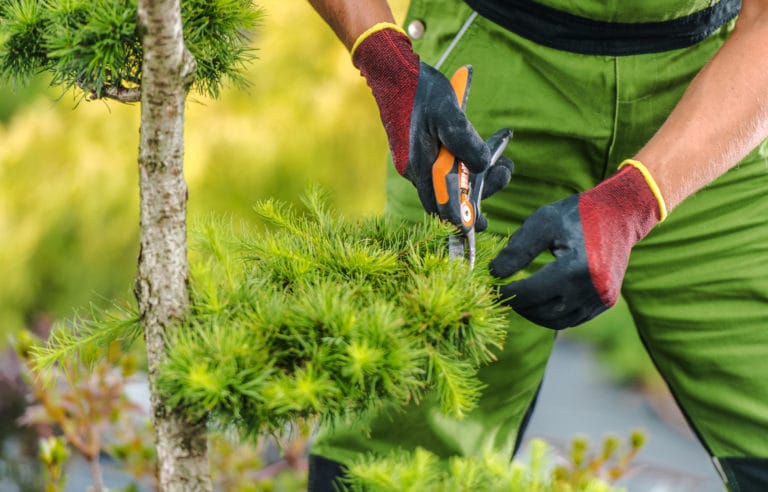Disputes over tree removal on property lines often arise between neighbors, sparking questions about responsibility and liability. Generally, the cost of removing a tree that straddles a property line is shared between the property owners whose land it occupies. However, navigating these situations can be complex, as it depends on various factors like local laws, agreements between neighbors, and the specific circumstances surrounding the tree’s location and condition. Clear communication and potentially legal guidance may be necessary to resolve such disputes amicably.
Understanding the Property Line
Before we delve into the question of who pays for tree removal on a property line, it is important to understand what a property line is. A property line is a legal boundary that separates one piece of land from another. It determines the extent of a property owner’s rights and responsibilities.
What is a Property Line?
A property line, also known as a boundary line, is a line that marks the extent of a property owner’s land. It is usually defined by physical markers such as fences, walls, or survey markers. Property lines are important because they determine the boundaries within which a property owner can exercise their rights and responsibilities.
Determining the Property Line
Determining the precise location of a property line can sometimes be challenging. In many cases, property lines are established through a survey conducted by a licensed surveyor. The surveyor will use various methods and tools to determine the exact location of the property line based on legal descriptions and records.
Property Line Disputes
Property line disputes can arise when there is a disagreement or uncertainty about the location of the property line. These disputes may occur between neighbors or between a property owner and a government entity. Resolving property line disputes often involves legal processes such as surveys, negotiations, and, in some cases, court proceedings.
Legal Boundaries and Property Line Encroachments
Property line encroachments occur when a structure or vegetation, such as a tree, extends beyond the legally established property line and onto a neighboring property. In the case of tree removal, determining who pays for the removal may depend on whether the tree is encroaching onto the neighbor’s property or if it is located on the property line itself.
Legal Responsibility for Tree Removal
Understanding the legal obligations for tree removal
The legal obligations for tree removal on a property line can vary depending on local laws and regulations. In some jurisdictions, property owners have a legal responsibility to maintain their trees and prevent them from causing harm or damage to neighboring properties.
It’s important to familiarize yourself with the specific laws and regulations in your area regarding tree maintenance and removal. This will help you understand your legal obligations and potential liabilities when it comes to tree removal on a property line.
Determining liability for tree removal
When it comes to determining liability for tree removal on a property line, it is essential to consider whether the tree is solely located on one property or if it extends onto both properties. If the tree is solely on one property, the owner of that property is typically responsible for its maintenance and removal.
However, if the tree extends onto both properties, the responsibility for its removal may be shared between the neighboring property owners. It is advisable to consult with a local attorney or legal professional to determine the specific liability for tree removal in your area.
Is It Legal to Prune or Remove the Tree On The Property Line?
The legality of pruning or removing a tree that is located on the property line will depend on the applicable local laws and regulations. It is important to familiarize yourself with any restrictions or permits required for tree removal in your area.
In some cases, both neighboring property owners may need to obtain consent from each other before proceeding with tree removal. It is advisable to communicate and obtain written agreements between neighbors to avoid potential disputes or legal issues.
Contractual agreements for shared tree removal
In situations where the tree is located on the property line, the neighboring property owners may enter into contractual agreements to share the cost of tree removal. These agreements can outline the responsibilities, costs, and any other relevant terms related to the tree removal process.
It is recommended to consult with a legal professional or mediator to facilitate the negotiation and drafting of such agreements to ensure clarity and fairness for all parties involved.
Legal process for resolving disputes over tree removal responsibilities
In the event of a dispute between neighboring property owners regarding tree removal responsibilities, the legal process may be necessary to resolve the issue. This typically involves filing a lawsuit, presenting evidence, and allowing a court to make a judgment on the matter.
Engaging in alternative dispute resolution methods, such as mediation or arbitration, may also be an option to consider before resorting to litigation. These methods can provide a less adversarial and more collaborative approach to resolving conflicts over tree removal responsibilities.
Shared Tree Removal Costs
When a tree is located on the property line and both neighboring property owners share the responsibility for its removal, the costs are typically shared as well. The exact division of costs can be determined through negotiation or contractual agreements between the parties involved.
It is important to document all agreements and keep records of any shared expenses related to tree removal. This can help avoid misunderstandings or disputes in the future and ensure a fair distribution of costs.
Disputes and Mediation
Disputes between neighboring property owners regarding tree removal can be emotionally and financially taxing. Engaging in mediation can be an effective way to resolve these disputes in a collaborative and non-adversarial manner.
Mediation involves a neutral third party who facilitates communication and negotiation between the parties involved. The mediator helps identify and explore mutually beneficial solutions, aiming to reach a resolution that satisfies all parties.
Insurance and Liability
When it comes to tree removal on a property line, insurance coverage and liability can be complex. It is advisable to review your homeowner’s insurance policy to understand what is covered and what is not regarding tree removal.
Liability for damages caused by trees, such as falling branches or uprooted trees, can also be a consideration. Determining liability may involve factors such as negligence, foreseeability, and property owner responsibilities.
Consulting with an insurance professional or legal expert can provide valuable guidance on insurance coverage and liability issues related to tree removal on a property line.
Communication and Documentation
Effective communication and documentation are crucial when it comes to tree removal on a property line. It is important to maintain open lines of communication with neighbors to discuss any tree-related concerns and potential tree removal plans.
Documenting agreements, consent, and any communication related to tree removal can help avoid misunderstandings or disputes in the future. Keeping records of expenses, receipts, and any written agreements is advisable to ensure clarity and accountability.
Alternatives to Tree Removal
Pruning and Trimming
If the tree on the property line does not pose an immediate hazard or obstruction, pruning and trimming it may be a viable alternative to complete removal. Pruning and trimming can help maintain the tree’s health and shape while addressing any overhanging branches or other concerns.
Transplanting the Tree
In some cases, if the tree has significant value or sentimental importance, it may be possible to transplant it to a different location on the property or to another suitable location. Transplanting a tree requires careful planning, professional expertise, and the cooperation of both neighboring property owners.
Cabling and Bracing
If the tree on the property line has structural issues or weak branches, cabling and bracing techniques can be employed to provide support and minimize the risk of falling or damage. Cabling and bracing should be performed by qualified professionals to ensure its effectiveness and longevity.
Tree Preservation Methods
Implementing tree preservation methods, such as proper irrigation, mulching, and regular inspections, can help maintain the health and stability of the tree on the property line. These methods aim to mitigate any potential risks or problems and preserve the tree’s long-term viability.
Creating Physical Barriers
If the tree on the property line is causing conflicts or encroachments, creating physical barriers such as fences or walls can help prevent further issues. These barriers should be erected within the legal boundaries and in compliance with any local regulations or HOA requirements.
Conclusion
Resolving tree removal responsibilities on a property line can be complex and may require legal, financial, and interpersonal considerations. Understanding the legal obligations, liabilities, and alternative options can help property owners navigate potential conflicts and reach fair and reasonable solutions.


